Are you thinking about an RV trip to Mexico but aren’t sure what it takes to cross the border without problems?
The answer for anyone who wants to take a motorhome, travel trailer, or fifth wheel to Mexico, is to learn what paperwork and other documents you must have to cross the border, and to make it simple, I put all the details in this guide.
Mexico requires more steps for tourists, including RVers, to enter their country. However, by following the plan below, you’ll have everything in order and ready for a Mexico camping trip to remember!
What You Need to Cross Your RV into Mexico
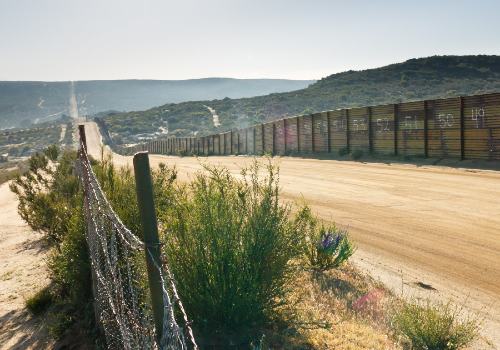
The United States-Mexico border is the most frequently crossed in the world.
With well over 340 million crossings each year, including thousands of RVers, the lines can get long at ports of entry.
When you have your camper and documents in order beforehand, you can expedite the process of traveling into Mexico by RV, so you can start exploring and enjoying the culture much faster.
Please note that Mexico has designated some areas as Free Trade Zones to improve tourism, and RV travel to these areas requires less paperwork, which I detail below.
Necessary Documents to Cross into Mexico in an RV
The following items you must have ready to show Mexican border agents:
1 – Proof of Citizenship
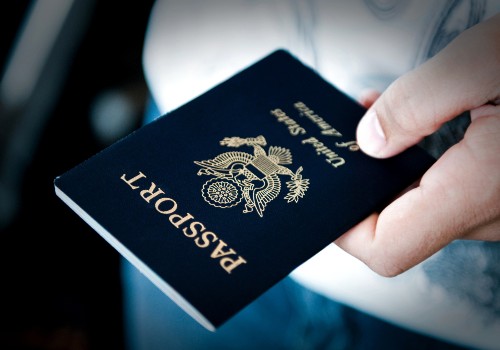
All members of your RV traveling party will need to present proof of their US citizenship.
Acceptable documents are:
A valid US passport book or passport card that will not expire during your stay
2 – Temporary Importation Permit (Tip) For RV and Tow Vehicle
You cannot enter Mexico unless you obtain a Temporary Importation Permit for your RV, tow vehicle, travel trailer, fifth wheel, or boat.
The permit is a must for all non-Mexican-citizen tourists and temporary residents such as students or workers.
The exception to the TIP rule is if you will be taking your recreational vehicle to locations within the Mexico Free Zone, also referred to as the Perimeter Zone, Free Trade Zone, or Liberated Zone.
This “zone” extends inwards about 12-16 miles (20 km) from the northern and southern Mexico land borders as well as all of the Baja California peninsula and most of Sonora.
If you are found outside of the Mexico Free Zone and you do not have a TIP for your camper or vehicle the punishment may include:
- Being sent back to the border
- Incarceration
- Paying a fine
- Having your RV and/or vehicle confiscated
A Temporary Import Permit is good for 180 days.
The current fee is $51, but you will also have to put down a deposit of $200-$400 depending on the RV age.
You must get your TIP when you first enter Mexico at the border. After that, you cannot obtain a TIP anywhere else within the country, except at the ferry in La Paz, BCS.
When you leave Mexico at the border, they verify you’re in the same RV that you came with, return your deposit, and you cancel and return your TIP, so don’t lose it on your travels.
How and when do you get a TIP?
You can obtain the permit in advance from the Banjercito website 7-60 days prior to travel, or up to six months in advance from select Mexican consulates in the US.
You can also purchase your TIP at the border.
Documents necessary to apply for a TIP include:
- Passport, passport card or green card
- A non-Mexican driver’s license with photo
- RV title and registration certificates
- Notarized letter of permission from any RV lien holder or lender approving travel in Mexico
- International Credit Card (American Express, Mastercard, Visa) in the name of the driver of the RV
- Proof of Mexico RV insurance
IMPORTANT: You cannot get a TIP for an RV you or anyone in your immediate family does not own, and you cannot get a TIP for any RV rental.
When you purchase your permit online, they will email it to you immediately. You need to print off the permit and receipt as well as save them on your cell phone.
Many border agents won’t accept your TIP without proof of payment, and you’ll be stuck paying a second time if you can’t show the receipt.
At checkpoints within the interior of Mexico, you show your TIP. Having a paper copy is crucial as there isn’t always internet service to access your email, and sometimes scanning equipment fails to read a mobile phone screen.
Mexico Temporary Vehicle Importation Permit (Video)
#3 – A Tourist Permit (FMM)
Part of crossing the border into Mexico in your RV includes buying a tourist permit or FMM.
You can get an FMM at the border, but it’s better to get all your traveling party’s FMM permits online when you purchase your TIP.
A valid passport or passport card is the only document you need to get your FMM.
The current cost for the tourist permit is about $30. You must get a permit for each person in your RV.
IMPORTANT: When you cross the border by land, and your RV trip is seven days or less, the FMM is free.
You must get online permits stamped at the border before crossing to make them valid. Print the email receipt from your purchase and show it at the border as proof of payment.
A stamped FMM is suitable for land travel anywhere in Mexico for up to 180 days.
Keep the permit in a safe place so it doesn’t get lost. You must return your FMM to the border agent when you leave Mexico.
#4 – Registration and Insurance for Your RV
You’ll need to provide proof of insurance and registration of your recreational vehicle and any tow vehicle or toad.
#5 – Mexican Auto Insurance Policy for Your RV

You MUST acquire Mexican auto insurance, such as found through reputable companies like MexPro, BajaBound, or Lewis and Lewis, even when you already have a U.S. RV insurance policy.
RV insurance policies from Canada or the United States have no jurisdiction in Mexico. If you get into an accident on your trip, US insurance will not cover your liability to other persons or property.
The Mexican government requires a separate policy when tourists visit and bring a vehicle or RV.
Most of these short-term insurance policies are inexpensive at around $22 a day, and you can purchase them in advance.
#6 – Explanation of Your Travel Plans
Expect to be asked why you are entering Mexico, where you are going, and how long you plan on staying.
Be as complete as you can with the details, as it will help border agents explain any regulations or alerts you need to know in various parts of the country.
You must secure a travel visa if you are planning a lengthy RV trip across Mexico that will exceed 180 days.
#7 – Health Inspection for Pets
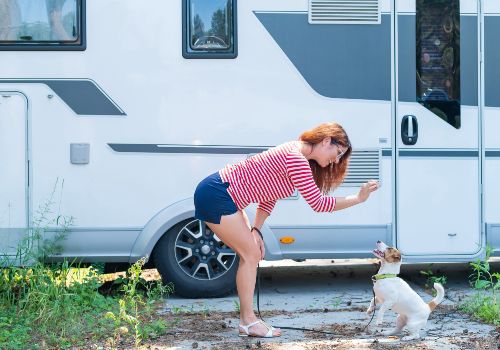
If you are traveling into Mexico with pets, you’ll need to provide proof to the border agents that they are in good health via an inspection at the border.
You can find the full listing of rules through the link above. However, expect to take your domestic cat(s) or dog(s) to the Mexican Animal and Plant Health Inspection Office (OISA) at the border, where officials working with SENASICA will check them and give them a pass if they are healthy.
IMPORTANT: Pets must come to the inspection office in a clean cage, and you can only bring along enough food to feed the animal for arrival day.
While no longer a requirement to enter Mexico, you should still bring along records of current pet vaccinations against rabies in the event your pet bites anyone during your stay.
Please note that Mexican police and authorities at checkpoints do not allow dogs to sit in the front of any vehicle, so you may need to retrain your pet so it doesn’t cause problems during your RV trip.
Also, if you plan to travel frequently with your pets between the US and Mexico, you can register for the Pet Program Frequent Traveler program and streamline the entry process.
Items You Can Bring into Mexico in an RV
It’s often easy to forget what items you may have stashed away in your RV cabinets and storage compartments.
Since the last thing you want to happen is to have problems at the border because you have forbidden items that could get you in trouble or be confiscated, you need to clean out your camper.
Here are all the types of personal belongings and camping gear that you can bring into Canada when you cross the border in your RV:
Personal Luggage
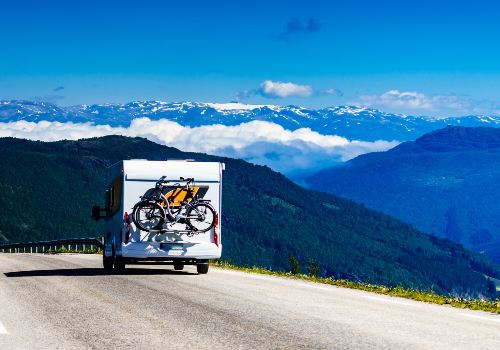
Under this category falls:
- Clothing, footwear, and toiletries for all occupants
- Camping equipment
- Sports equipment
- Two cameras or video recorders
- Personal computer or tablet, up to 3 cell phones, printer, projector, GPS system, chargers and accessories
- Baby travel accessories, like strollers and baby-walkers
- Boats
- Entertainment items such as portable radios, DVD player, laser discs, etc.
- Books, magazines, and printed documents
- Up to five toys or video games
- Two musical instruments with accessories
- Medical equipment and medications (must show a prescription for psychotropic drugs)
- Basic set of tools
- Up to three cats or dogs with accessories if they have an import certificate
All the items above are duty-free. Another merchandise is acceptable up to the allowed exemption of $300 per person.
Any items worth more than $300 will need to declare it to the border agents, and you will need to take your RV through the Declaration Lane at the border crossing.
Food
Mexico allows a wide array of food items to cross their border, as long as it is in quantities for the RV occupant’s personal consumption and there’s no danger of introducing diseases or pests.
All food items are subject to agent inspection, and you can find a complete list on the BajaBound website, but here is an idea of the scope of allowable imports:
- Vegetables (dehydrated) and their by-products
- Many varieties of nuts
- Roasted coffee, spices, honey, cereal
- Aged or cured meats
- Frozen, dried, smoked, cooked fish and seafood
- Dehydrated and seedless fruits
- Dried tobacco
- Cheese, butter, cream, and yogurt
- Pasteurized, dry, and condensed milk
Pet Food

Dry and wet, originally packaged and labeled balanced pet foods and treats with no ruminant origin content.
Want to Connect With a Community of Over 1,078 RV Enthusiasts?
Ruminants are cattle, deer, sheep, antelopes, giraffes, and their relatives.
Money
Carrying cash or bearer-negotiable instruments is legal when entering Mexico. However, you must declare such monies if the total amount exceeds $10,000.
Failure to declare is a violation punishable under Mexican Law and results in administrative penalties. In addition, if the total amount exceeds $30,000, the punishment is imprisonment.
Alcohol
If you have alcohol in your RV when you reach the Mexico border, know that you’ll only be able to bring across:
- Up to three liters of alcoholic beverages
- Up to six liters of wine
Tobacco Products
The limits for transporting tobacco products across the Mexican border include:
- 25 cigars
- No more than 20 packs of cigarettes
- 200 grams of tobacco
Firearms, Ammunition, Weapons, Explosives
Importing any weapons, cartridges, ammunition, explosives, and related chemical substances into Mexico requires you to obtain the appropriate permits from the federal government.
Please read the rules and regulations to import weapons on the SAT Customs and the National Defense Secretariat websites to avoid any problems.
Failure to obtain a permit is an offense punishable by imprisonment.
Items You Cannot Bring into Mexico in an RV
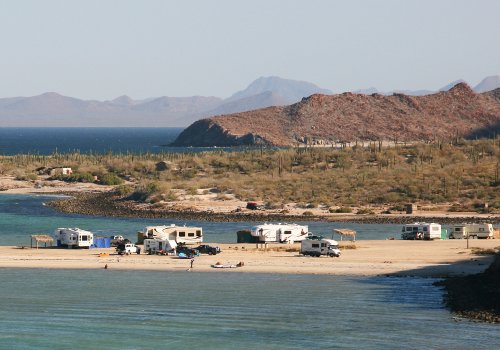
Mexico prohibits certain items from crossing its borders to prevent diseases.
These items include:
- Vegetable plants and seeds
- Fresh meat, cheese, fruits, and vegetables
- Non-pet animals
- Untanned leather or any animal-part products
- Most grains
- Fried chicken
- Fresh chestnuts
- Green coffee and tobacco
- Live turtles or fish
- Live, raw or dried crustaceans
If you have any above items in your recreational vehicle at the time of crossing, you MUST declare it to the border agents. Fines of $50-$1,000 may result from failing to report agricultural items.
What to Expect When You Reach a Mexico Port of Entry
When you know what to expect when you arrive at the Mexico border in your recreational vehicle, it will be easier to have the correct paperwork ready and know what information they will ask about so you can move through the checkpoint faster.
The time it takes to clear the border depends on many factors, such as traffic levels, pet inspections, or agents wanting to go over your RV to ensure you aren’t carrying illegal items.
Choose the correct lane for your needs, as there are ones for people who have items to declare, those that don’t.
Expect to hand over the passports of all RV occupants and answer these questions:
- Who else in in the vehicle besides you?
- Do you have pets? If so, do you have their clearance certificate?
- Where are you going?
- How long do you plan to remain in Mexico?
- Are you carrying any firearms or weapons?
How is Covid Currently Affecting the Mexico Border Crossings?

Mexico land border entry ports are currently operating a bit slower than usual due to the pandemic.
Mexico does not require proof of a Covid vaccine nor impose any other legal restrictions on passengers or vehicles entering Mexico by land from the US.
The US is currently requiring all travelers coming across the Mexico border to be fully vaccinated, with proof showing the vaccine was from an approved brand.
How Long Is the Wait to Cross the Mexico Border?
The average wait time to clear the Mexico border is 60 minutes.
However, crossings away from major highways or cities take much less time.
Expect it to take longer if you have pets that need to have a health examination for border clearance.
You can check the CBP Border Wait Times website for up-to-date stats so you can track the best time to arrive to speed up the process.
In general, very early morning on weekdays is the best time to cross the border into Mexico in your RV at any of the 38 official US-Mexico border crossings.
Final Thoughts
Mexico is a beautiful RVing destination, especially when you want to avoid the cold winter months in the US.
Crossing the border to Mexico in an RV takes more preparation than going north over the border to Canada, but once you give it a try, you’ll see it isn’t as hard as it appears. The payoff is exploring a country full of glorious landscapes, ocean beaches, friendly people, delicious food, and vibrant culture.
RV travel across the US border to Mexico is a fantastic opportunity that you shouldn’t miss, so use this guide and start planning an international camping adventure!
Crossing the Border So We Can RV Mexico (Video)
"Man cannot discover new oceans unless he has the courage to lose sight of the shore."
-- Andre Gide

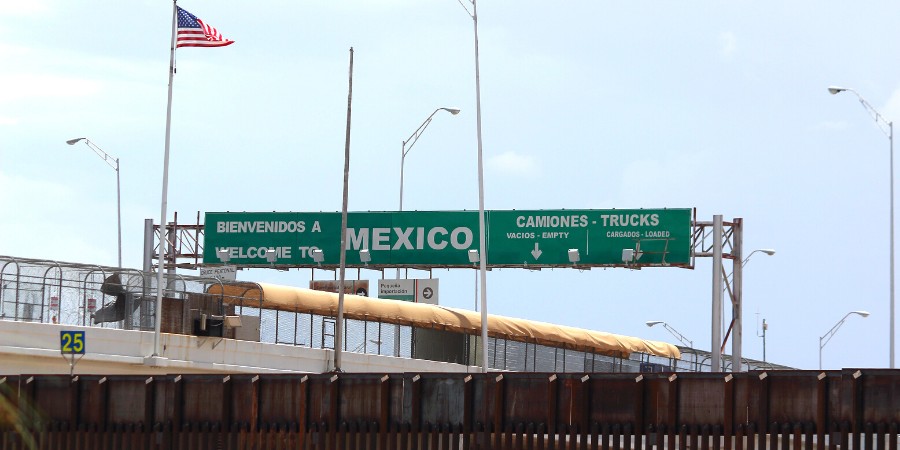



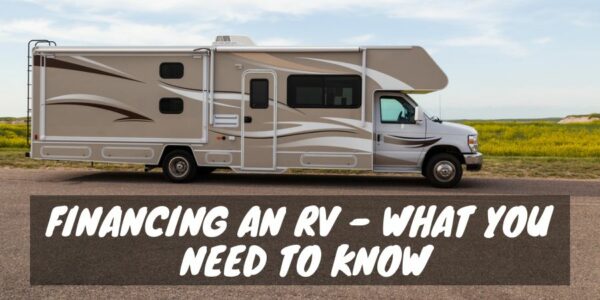






Which border crossing into Mexico is best for a 30ft Class C RV to fit through. We had a 40ft camper last time and it was nightmare
We were told by an RV facility in Melaque, that we can get a 10 year permit to have an RV here for our personal use. Your article indicates the maximum is 180 days. Is there some other process of farm definites us to leave her motorhome here when we return to Canada in the summer?